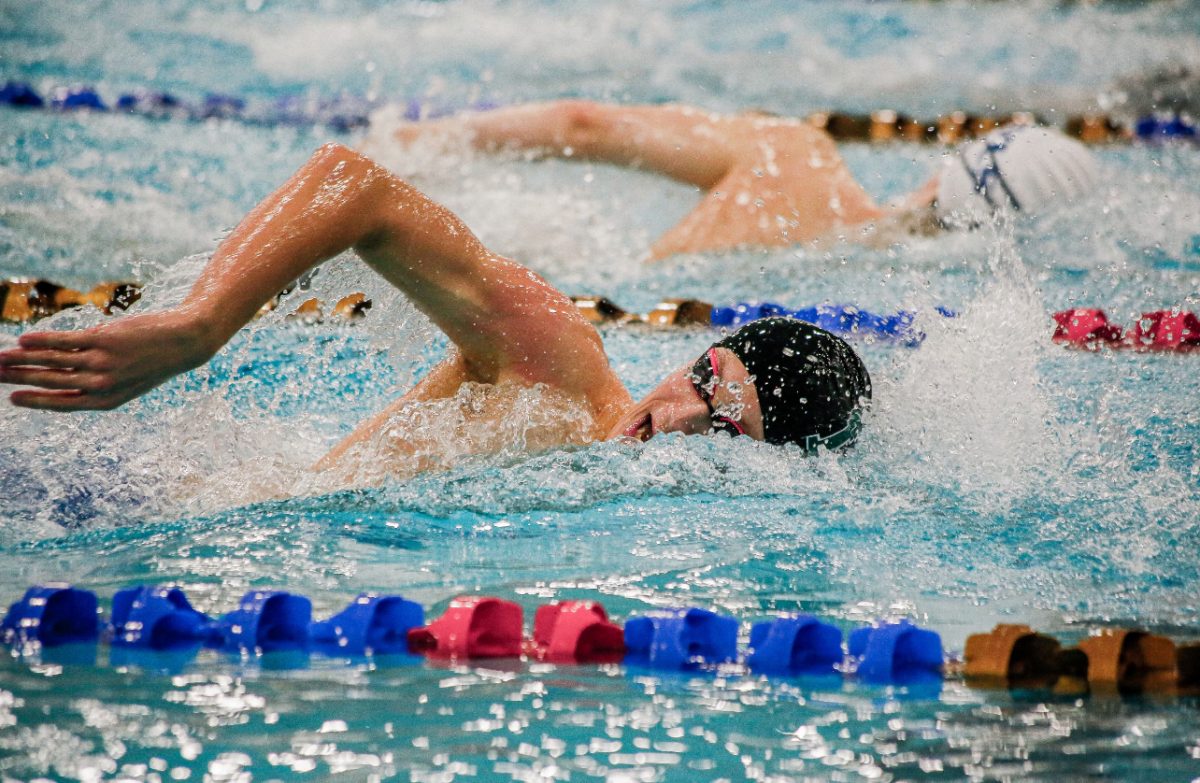Starting from an early age, many students begin the process of athleticism. They try several sports until they find one that they can connect to and release their stress. Swim & Dive is considered a sport of meditation, a way to lessen a person’s problem by staying in the water. However, this “stress-relieving” sport challenges its players mentally and physically. According to swimmingworldmagazine.com, “The biggest factor to consider in swimming is the water. Water is much denser than air, so there is much more resistance preventing people from being able to move through it quickly and freely. This makes it so much more difficult compared to other land sports.”
Several times, high school students view sports simply as “uncool” games. They underestimate the effort and time put into it which stands out from other forms of academic work. To master this physical activity, junior athletes like Natalia Hedger began playing at a very young age.
“I wouldn’t say it’s very easy. Swimming is a very full-body sport. It’s all about working all of your muscles at the same time. You have to start at a young age,” Hedger said. “I’m used to it by now because I started at a young age but I feel like a lot of people underestimate swimming. A lot of people think that swimming is really easy, but it’s not.”
In other land sports, athletes do weight training along with their own individual sports drilling. In swim not only do they lift weights, but they also have warm-up sets for cardio. Senior Anna Tomlinson trains with her team members using some aerobic sets and swim drills.
“So we usually swim every day. And then two days a week we do weight room. So we just do that for strength training. And then when we’re in the pool, we do a lot of cardio and aerobic sets,” Tomlinson said. “Today, we started with a 200-free 200-drill swim twice. So in total that was the 800 Warm-up.”
For a student-athlete, they need to practice to become better even if it means practicing outside of their school team. In various sports, missing a single practice might not have a huge effect on their sports lives. However, Head Swim Coach Kahla Blake knows the lack of commitment in the sport can mess up the player’s standards.
“Swimming is unlike every sport in that if you miss a practice or two, it will affect your conditioning. If you miss several days before a competition, it will have a negative outcome on your races,” Blake said. “Most swimmers practice 6 times per week, often twice a day. It is a huge commitment, both physically and time.”
A child’s life slowly changes once they decide to become an athlete. No matter the sports they play, there is a chance of them acquiring either body injuries or a change in diet. Tomlinson has been a swimmer for a long period and has noticed the side effects of swimming on her body and diet.
“Swimming changes your whole life. Either it changes your body structure, or it changes the way you eat. When you burn a lot of calories from working out a lot, swimmers tend to eat a lot more than the average person,” Tomlinson said. “As a swimmer, I eat more proteins to rebuild my muscles. You can get a lot of shoulder injuries because of the strokes, the pool can make your skin, and your hair dry especially in the winter.”
To strive for the best or to be better than others, players engage in clubs outside of the school team to get into more practice. Although it might be the same sports, both teams might focus on the same thing, but practice in different ways. Senior Ravi Rayathattha has observed the different techniques that his club coach uses that are different from the school coach.
“I think it’s the way that they do it. Some of the drills are different, they work on different things. And then you recognize patterns and how the coach makes different sets,” Rayathattha said. “So our coach on this team makes a warm-up and then maybe has a kick set every week. The coach for the club team has a lot more technique-based sets like that.”
Students have a way of grouping school sports as either “cool” or “uncool.” This activity involves a large amount of commitment and dedication. It’s a form of stress relief and can be mentally challenging for the players. Like any sports, swim and dive have physical and mental effects on students.

